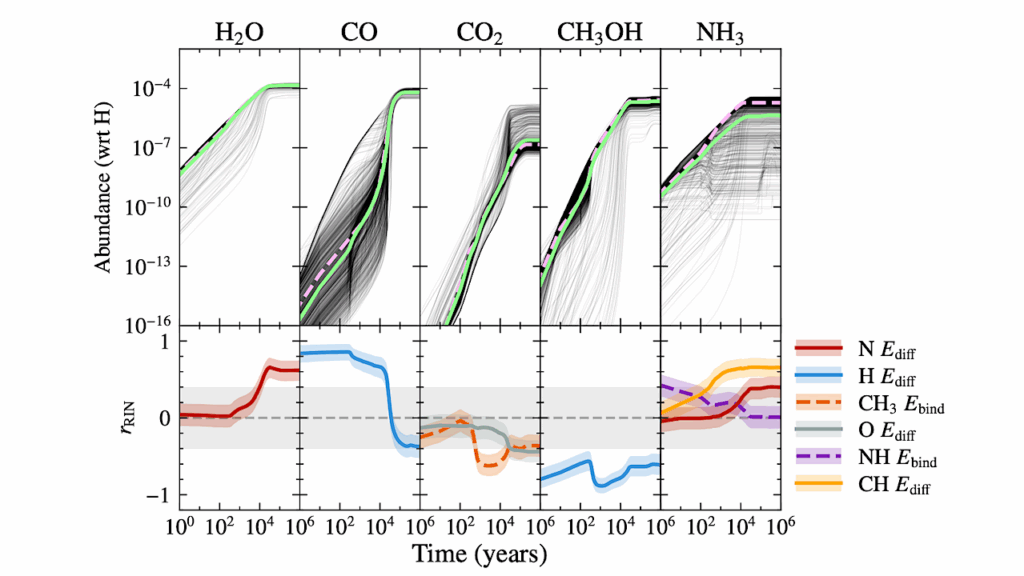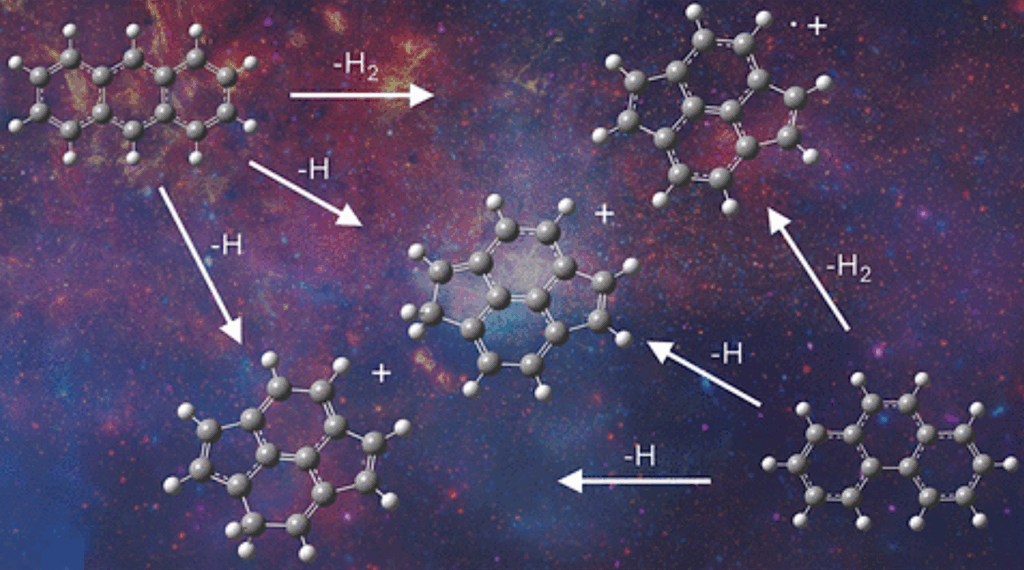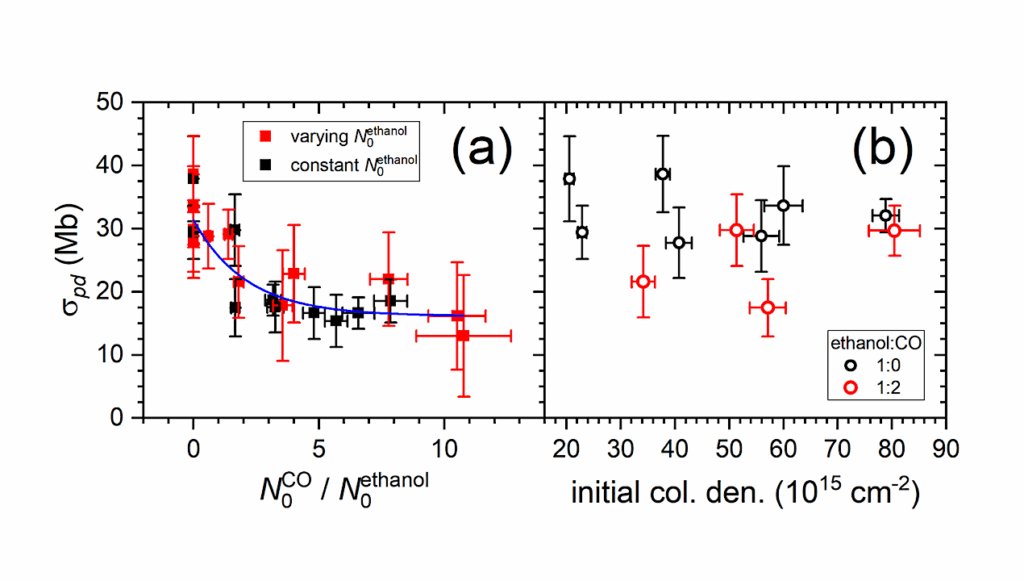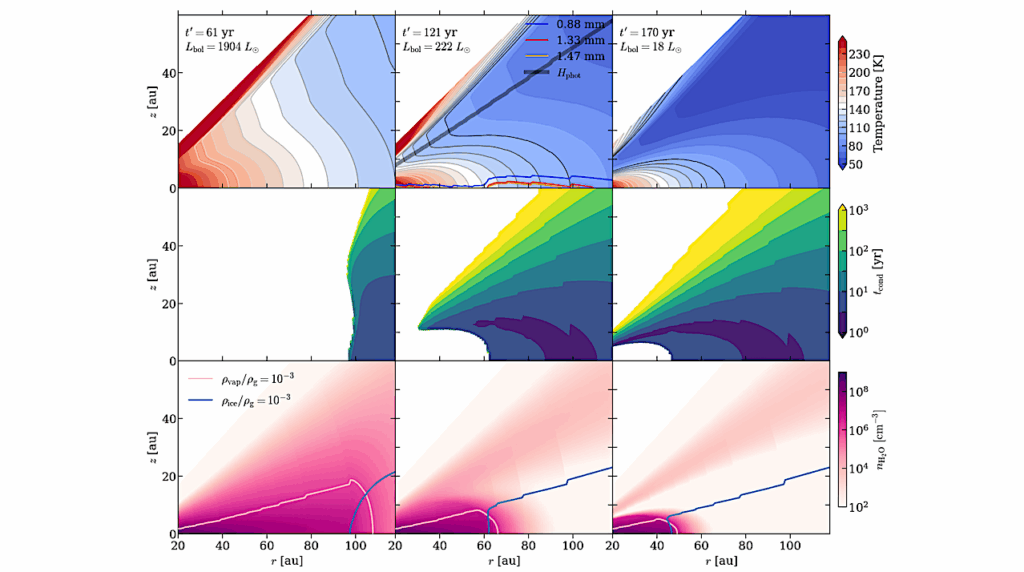Evidence for Surprising Heavy Nitrogen Isotopic Enrichment in Comet 46P/Wirtanen’s Hydrogen Cyanide
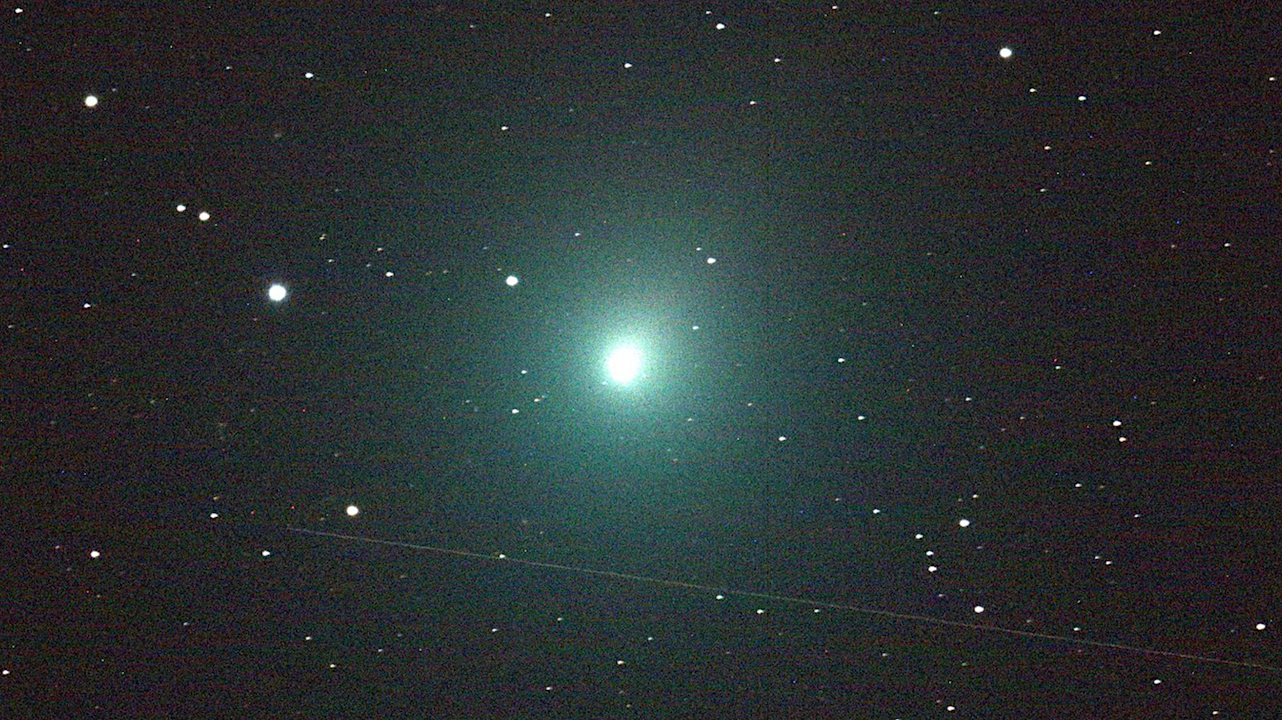
46P/Wirtanen is a Jupiter-family comet, probably originating from the Solar System’s Kuiper belt, that now resides on a 5.4 year elliptical orbit.
During its 2018 apparition, comet 46P passed unusually close to the Earth (within 0.08 au), presenting an outstanding opportunity for close-up observations of its inner coma. Here we present observations of HCN, H13CN and HC15N emission from 46P using the Atacama Compact Array (ACA).
The data were analyzed using the SUBLIME non-LTE radiative transfer code to derive 12C/13C and 14N/15N ratios. The HCN/H13CN ratio is found to be consistent with a lack of significant 13C fractionation, whereas the HCN/HC15N ratio of 68±27 (using our most conservative 1σ uncertainties), indicates a strong enhancement in 15N compared with the solar and terrestrial values.
The observed 14N/15N ratio is also significantly lower than the values of ∼140 found in previous comets, implying a strong 15N enrichment in 46P’s HCN. This indicates that the nitrogen in Jupiter-family comets could reach larger isotopic enrichments than previously thought, with implications for the diversity of 14N/15N ratios imprinted into icy bodies at the birth of the Solar System.
M. A. Cordiner, K. Darnell, D. Bockeleé-Morvan, N. X. Roth, N. Biver, S. N. Milam, S. B. Charnley, J. Boissier, B. P. Bonev, C. Qi, J. Crovisier, A. J. Remijan
Comments: Accepted for publication in PSJ, September 2024
Subjects: Earth and Planetary Astrophysics (astro-ph.EP)
Cite as: arXiv:2409.05711 [astro-ph.EP] (or arXiv:2409.05711v1 [astro-ph.EP] for this version)
https://doi.org/10.48550/arXiv.2409.05711
Focus to learn more
Submission history
From: Martin Cordiner PhD
[v1] Mon, 9 Sep 2024 15:22:32 UTC (1,261 KB)
https://arxiv.org/abs/2409.05711
Astrobiology, Astrochemistry,


